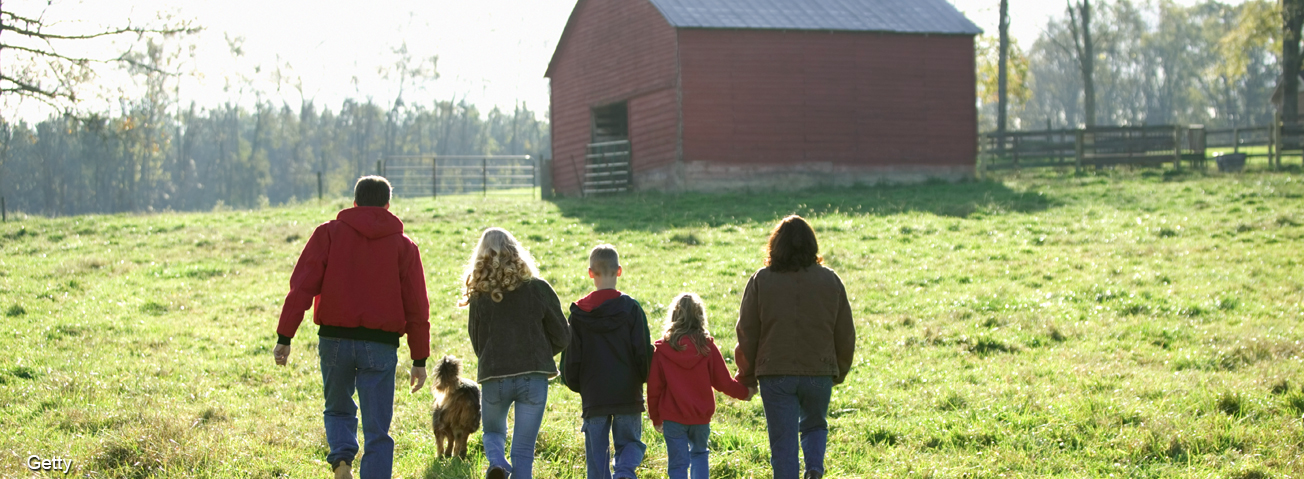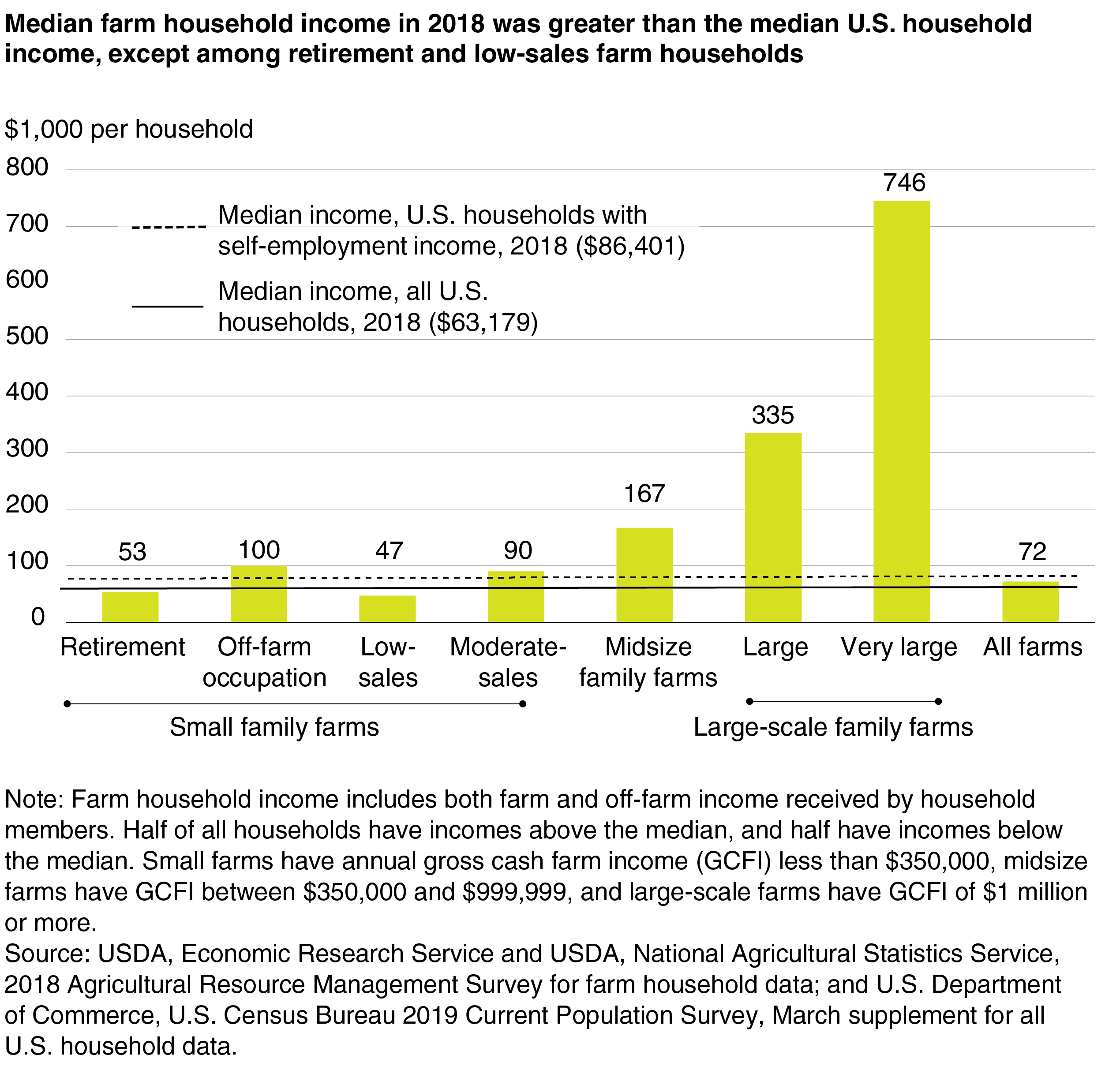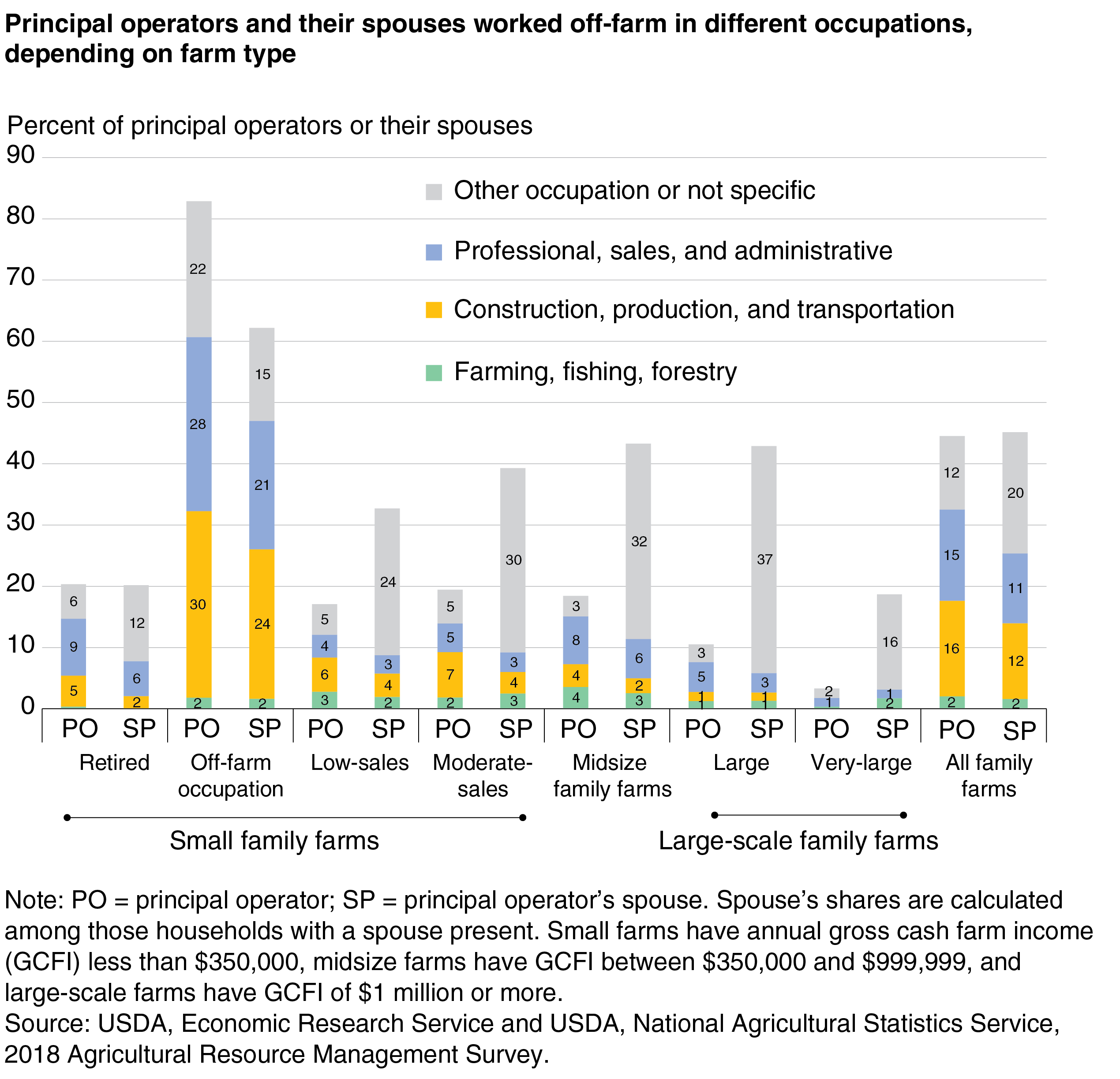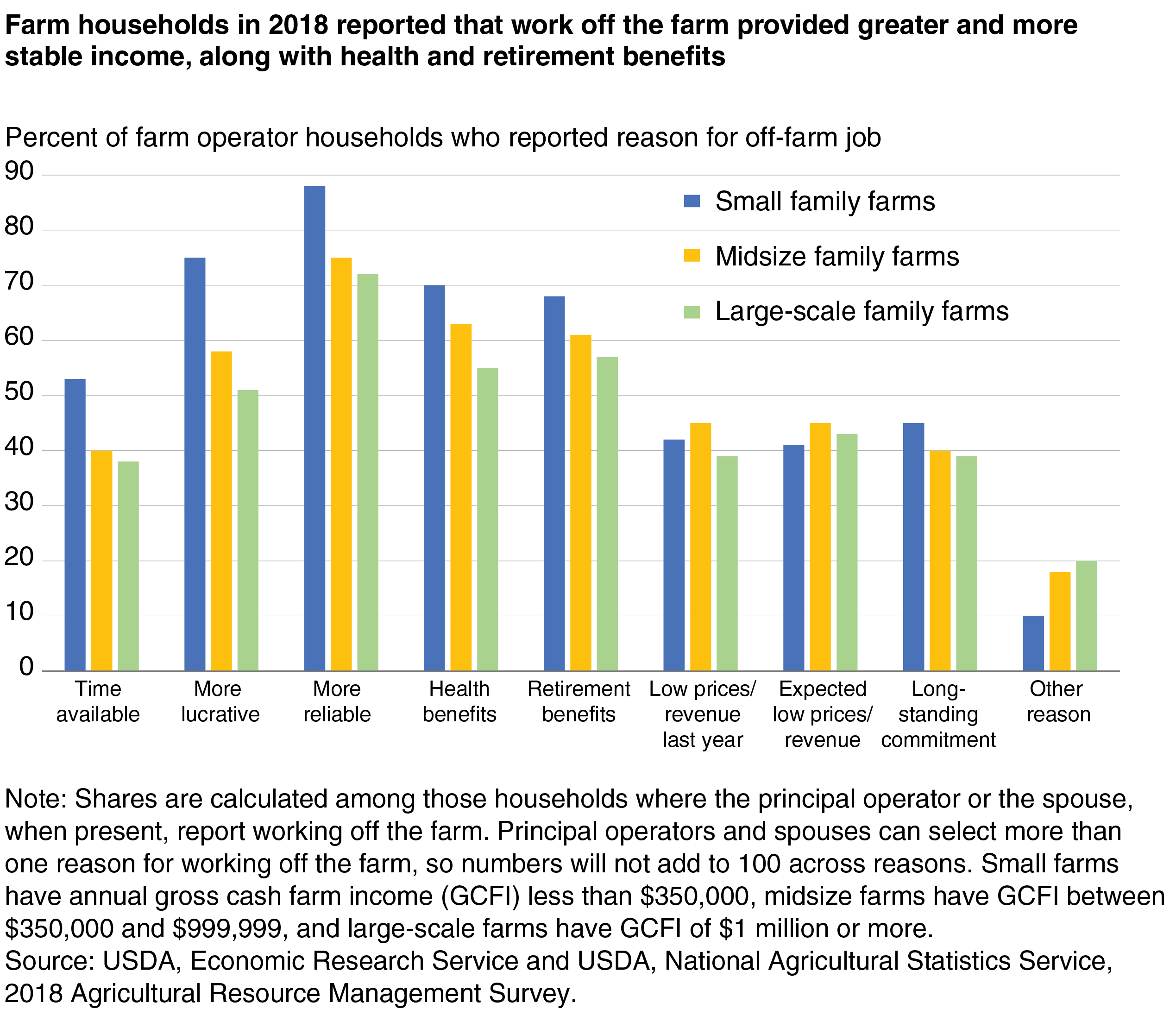
Family Farm Households Reap Benefits in Working Off the Farm
- by Christine Whitt and Jessica E. Todd
- 3/2/2020
USDA’s Economic Research Service (ERS) develops and updates estimates of family farm household income. Estimates show that family farm households earn income from a variety of sources, including sales of crops and livestock, Government payments, and off-farm income. Higher and more stable income, health insurance, and retirement benefits are some of the main reasons why farm operators and their spouses find employment off their farm. These estimates are based on the Agricultural Resource Management Survey (ARMS), jointly administered by ERS and USDA’s National Agricultural Statistics Service.
Family farms, those where the principal operators and their relatives (by blood or marriage) own more than half of the business’s assets, continue to dominate U.S. agricultural production. As a group, family farms accounted for 98 percent of farms and 88 percent of production in 2018.
Farm households often earn higher incomes than other types of households. In 2018, 57 percent of U.S. farm households received incomes at or above the median for all U.S. households, which was $63,179 that year. ERS classifies farm households into seven types based on their annual gross cash farm income (GCFI). Median household incomes for five of the seven farm types exceeded both the median U.S. household and the median income for households with self-employment income. However, the median income for all family farm households is lower than the median among all U.S. households with self-employment income.
Income from farming varied across all farm types. Between 24 and 71 percent of households operating farms in the small farm categories (those with less than $350,000 in annual GCFI) reported losses from farming in 2018, but only those in the off-farm occupation and low-sales farms categories had a negative average farm income. Many small farm households rely on off-farm income instead. Self-employment and wages from an off-farm job are often the main sources of income for small farm households. Unearned income (such as public and private pensions, interest and dividend payments, asset sales, and Social Security) can also provide a significant share of off-farm income, particularly for those where the principal operator reports being retired from farming. By comparison, large and very large family farms depend on income from farming. Large family farms have an average farm income of $355,269, and very large family farms have an average farm income of $1,290,377. Only 14 percent of total household income came from off-farm sources among those operating large farms, while 3 percent came from off-farm sources among those operating very large farms.
| Farm type | Households with negative farm income | Total income from farming | Total off-farm income | Earned off-farm income | Total household income |
|---|---|---|---|---|---|
| Percent | Dollars (Mean) | Percent of off-farm income | Dollars (Mean) | ||
| Small family farms | |||||
| Retirement | 56.1 | 2,865 | 64,279 | 46.4 | 67,144 |
| Off-farm occupation | 70.9 | -4,392 | 135,518 | 83.7 | 131,126 |
| Farming-occupation | |||||
| Low-sales | 61.9 | -4,205 | 61,830 | 46.4 | 57,626 |
| Moderate sales | 23.9 | 40,057 | 67,995 | 50.1 | 108,053 |
| Midsize family farms | 18.4 | 118,024 | 78,992 | 63.9 | 197,016 |
| Large-scale family farms | |||||
| Large | 14.2 | 355,269 | 58,216 | 64.4 | 413,485 |
| Very large | 16.1 | 1,290,377 | 44,758 | 46.9 | 1,335,135 |
| All family farms | 59.1 | 18,425 | 93,786 | 69.9 | 112,210 |
| Note: Other off-farm income is unearned and includes interest and dividends, benefits from Social Security and other public pensions, alimony, annuities, net income of estates or trusts, and private pensions. Small farms have annual gross cash farm income (GCFI) less than $350,000, midsize farms have GCFI between $350,000 and $999,999, and large-scale farms have GCFI of $1 million or more. Source: USDA, Economic Research Service (ERS) estimates using data from ERS and USDA, National Agricultural Statistics Service, 2018 Agricultural Resource Management Survey. |
|||||
Among all family farms, 45 percent of principal operators and spouses have a job off the farm. Not surprisingly, the share of principal operators who have such jobs is highest among those on off-farm occupation farms, which are those where the principal operator reports that their main occupation is something other than farming (83 percent). Most of these jobs were in construction, production, transportation, professional, sales, and administrative occupations. Principal operators of large and very large farms are much less likely to have off-farm jobs, 11 and 3 percent, respectively. The share of spouses, when present, who hold jobs off the farm ranges from 19 percent on very large farms to 62 percent on off-farm occupation farms.
Across all farm types, farmers or their spouses reported various reasons for having a job off the farm. The majority of households, regardless of farm size, report that they work off the farm because it is more lucrative than farm work, provides more reliable income, and may offer health and retirement benefits. Moreover, about half of all households operating small family farms with principal operators or spouses (when present) who work off the farm reported that time obligations on the farm leave sufficient time for additional work off the farm. These reasons are less likely to be cited by households operating larger farms. About 40 percent of all principal operators or their spouses who work off the farm listed farm-related financial stress, such as low commodity prices or low farm revenue, as a reason for having a job off the farm.
Spouses who worked off the farm consistently cited health care benefits as one of the reasons for taking off-farm employment. Principal operators, particularly those at large-scale farms and farming-occupation small farms, were generally less likely to cite health care benefits as a reason for having a job off the farm. This likely reflects the fact that spouses can be covered by each other’s health insurance, so only one spouse usually needs to have health insurance through a job off the farm.
This article is drawn from:
- Whitt, C., MacDonald, J.M. & Todd, J.E. (2019). America’s Diverse Family Farms: 2019 Edition. U.S. Department of Agriculture, Economic Research Service. EIB-214.
You may also like:
- ARMS Farm Financial and Crop Production Practices. (n.d.). U.S. Department of Agriculture, Economic Research Service.
- Farm Household Well-being. (n.d.). U.S. Department of Agriculture, Economic Research Service.
- Prager, D. (2018, December 3). Farm Households Divide Their Time Between On-Farm and Off-Farm Labor. Amber Waves, U.S. Department of Agriculture, Economic Research Service.
- Prager, D., Tulman, S. & Durst, R. (2018). Economic Returns to Farming for U.S. Farm Households. U.S. Department of Agriculture, Economic Research Service. ERR-254.
We’d welcome your feedback!
Would you be willing to answer a few quick questions about your experience?





